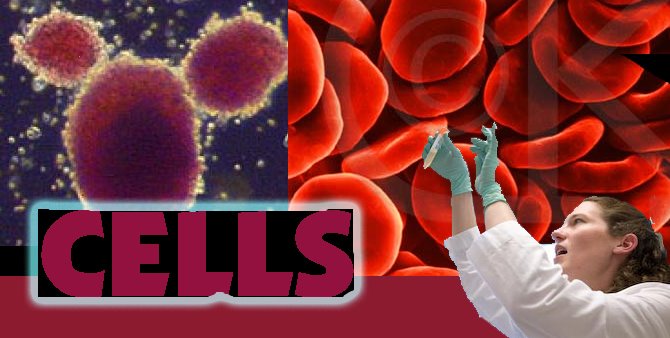Salmonella enterica. TEM about 10,000X. Salmonella is an enteric bacterium related to E. coli. The enterics are motile by means of peritrichous flagella.
Flagella
Flagella are filamentous protein structures attached to the cell surface that provide the swimming movement for most motile procaryotes. Procaryotic flagella are much thinner than eucaryotic flagella, and they lack the typical "9 + 2" arrangement of microtubules. The diameter of a procaryotic flagellum is about 20 nanometers, well-below the resolving power of the light microscope. The flagellar filament is rotated by a motor apparatus in the plasma membrane allowing the cell to swim in fluid environments. Bacterial flagella are powered by proton motive force (chemiosmotic potential) established on the bacterial membrane, rather than ATP hydrolysis which powers eucaryotic flagella. About half of the bacilli and all of the spiral and curved bacteria are motile by means of flagella. Very few cocci are motile, which reflects their adaptation to dry environments and their lack of hydrodynamic design.
The ultrastructure of the flagellum of E. coli is illustrated in Figure 3 below (after Dr. Julius Adler of the University of Wisconsin). About 50 genes are required for flagellar synthesis and function. The flagellar apparatus consists of several distinct proteins: a system of rings embedded in the cell envelope (the basal body), a hook-like structure near the cell surface, and the flagellar filament. The innermost rings, the M and S rings, located in the plasma membrane, comprise the motor apparatus. The outermost rings, the P and L rings, located in the periplasm and the outer membrane respectively, function as bushings to support the rod where it is joined to the hook of the filament on the cell surface. As the M ring turns, powered by an influx of protons, the rotary motion is transferred to the filament which turns to propel the bacterium.
Flagella may be variously distributed over the surface of bacterial cells in distinguishing patterns, but basically flagella are either polar (one or more flagella arising from one or both poles of the cell) or peritrichous (lateral flagella distributed over the entire cell surface). Flagellar distribution is a genetically-distinct trait that is occasionally used to characterize or distinguish bacteria. For example, among Gram-negative rods, Pseudomonas has polar flagella to distinguish them from enteric bacteria, which have peritrichous flagella.
Flagella were proven to be organelles of bacterial motility by shearing them off (by mixing cells in a blender) and observing that the cells could no longer swim although they remained viable. As the flagella were re-grown and reached a critical length, swimming movement was restored to the cells. The flagellar filament grows at its tip (by the deposition of new protein subunits) not at its base (like a hair).
Procaryotes are known to exhibit a variety of types of tactic behavior, i.e., the ability to move (swim) in response to environmental stimuli. For example, during chemotaxis a bacterium can sense the quality and quantity of certain chemicals in its environment and swim towards them (if they are useful nutrients) or away from them (if they are harmful substances). Other types of tactic response in procaryotes include phototaxis, aerotaxis and magnetotaxis. The occurrence of tactic behavior provides evidence for the ecological (survival) advantage of flagella in bacteria and other procaryotes.Detecting Bacterial Motility
Since motility is a primary criterion for the diagnosis and identification of bacteria, several techniques have been developed to demonstrate bacterial motility, directly or indirectly.
1. flagellar stains outline flagella and show their pattern of distribution. If a bacterium possesses flagella, it is presumed to be motile.
2. motility test medium demonstrates if cells can swim in a semisolid medium. A semisolid medium is inoculated with the bacteria in a straight-line stab with a needle. After incubation, if turbidity (cloudiness) due to bacterial growth can be observed away from the line of the stab, it is evidence that the bacteria were able to swim through the medium.
Julius Adler exploited this observation during his studies of chemotaxis in E. coli. He prepared a gradient of glucose by allowing the sugar to diffuse into a semisolid medium from a central point in the medium. This established a concentration gradient of glucose along the radius of diffusion. When E. coli cells were seeded in the medium at the lowest concentration of glucose (along the edge of the circle), they swam up the gradient towards a higher concentration (the center of the circle), exhibiting their chemotactic response to swim towards a useful nutrient. Later, Adler developed a tracking microscope that could record and film the track that E. coli takes as it swims towards a chemotactic attractant or away from a chemotactic repellent. This led to an understanding of the mechanisms of bacterial chemotaxis, first at a structural level, then at a biomolecular level.
3. direct microscopic observation of living bacteria in a wet mount. One must look for transient movement of swimming bacteria. Most unicellular bacteria, because of their small size, will shake back and forth in a wet mount observed at 400X or 1000X. This is Brownian movement, due to random collisions between water molecules and bacterial cells. True motility is confirmed by observing the bacterium swim from one side of the microscope field to the other side.
Wet mount of the bacterium Rhodospirillum rubrum, about 1500X mag. Click here or on the image for a short video from the Department of Microbiology and Immunology, University of Leicester, that illustrates swimming motility of this photosynthetic purple bacterium.

